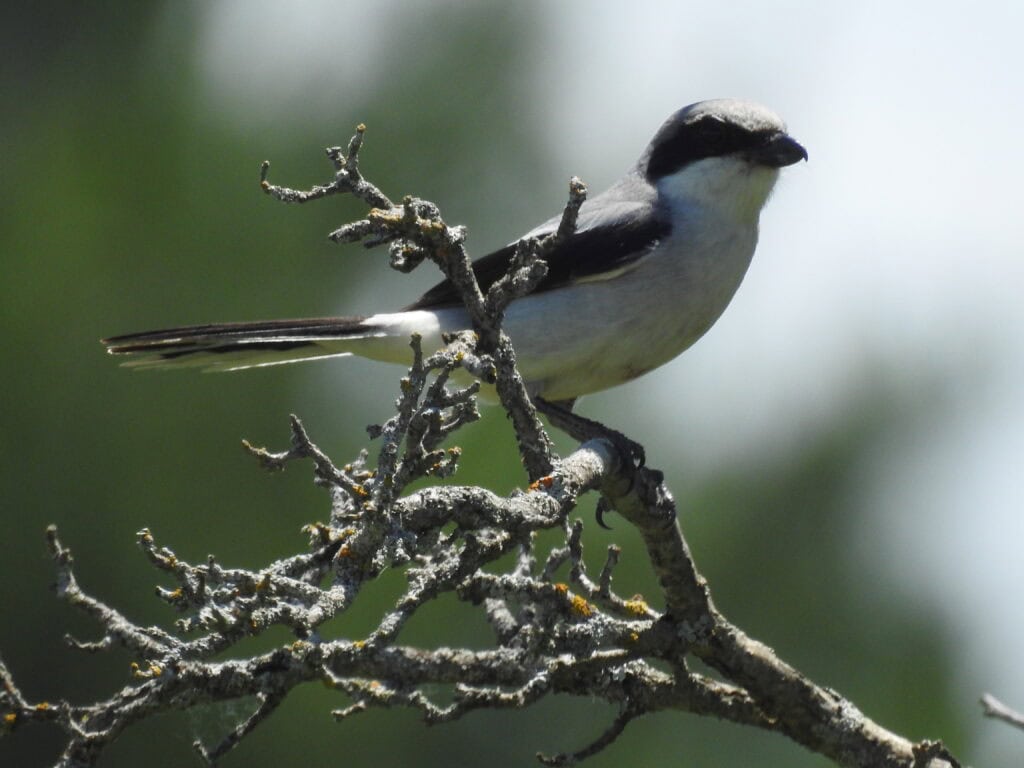Managers in captive breeding programs for endangered songbirds wondered why they seemed to be growing over time
Changes in the appearance of loggerhead shrikes captive-bred for release in southern Ontario had wildlife professionals concerned that their program was accidentally prompting evolution that may not suit them in the wild.
But research reveals that conditions in zoos may not be driving changes in bird mass and leg sizes.
“The changes seem to line up more closely with genetic drift,” said Drew Sauve, an adjunct assistant professor at Queen’s University and manager of research and conservation at the African Lion Safari—a drive-through wildlife park in southern Ontario. Genetic drift is a term that refers to the random shifts in genes that occur within a population, which isn’t considered part of natural selection.
The loggerhead shrike (Lanius ludovicianus) is a songbird found widely across North America. The range stretches into southern Ontario, with a unique subspecies considered endangered in that province. Their numbers are likely dropping there due to landscape use changes away from cattle production. Shrikes prefer to hunt insects and other small creatures in the open habitats that agriculture offers, impaling food they catch on hawthorn tree spikes, sharp branches or even barbed wire. Drops in their numbers may also be related to problems the shrikes are experiencing during their migration, though researchers don’t know as much about these challenges. To help conserve the declining subspecies, the nonprofit Wildlife Preservation Canada coordinates a captive breeding program currently involving six facilities in Canada and the United States. The program contributes birds that scientists release into two rural areas near Toronto.

But breeders had noticed that the birds they had been keeping had begun to look a little different from usual. They were larger in mass and often had shorter but thicker legs—so much so that the workers had to move up a leg band size in tagging some of the shrikes.
Researchers became concerned that the breeding program may be somehow causing evolutionary changes in the birds—a potential problem for those slated for reintroduction, as any changes the species developed to be more suited to their captive ecosystems may not be favorable in the wild.
“We don’t want to be driving the change ourselves through some sort of selection,” Sauve said.

In a study published recently in Animal Conservation, Sauve and his colleagues gathered breeding data from the African Lion Safari and seven other zoos and facilities that were part of the captive breeding program that contributed to releases in southern Ontario to try to determine the causes of these changes.
They homed in on several characteristics, like bird mass and wing and leg bone length. Statistical analysis of the recorded characteristics of the birds’ bodies, as well as genetic analysis, revealed that gene flow in shrikes had changed compared to wild birds about halfway through the program.
They found that the changes were mostly driven by genetic drift. This essentially means that it was likely coincidence—that birds with certain characteristics showed up more commonly for a few years by chance before those characteristics became less common again.
While the researchers didn’t take environmental factors that might be causing any changes in bird bodies into account, Sauve said the discovery that it was likely genetic drift is a “relief” for people managing the program. The results seem to show that accidental breeding selection in the program isn’t likely driving these changes. While the size and shape shifts they saw changed back to normal in more recent years, the next steps will be to analyze environmental factors that might be driving some change, Sauve said.
Some of the changes that researchers noticed in shrikes over time may have also been due to a change in process. “Over time in the study, we noticed that the age that we measured the birds was a little later in time,” Sauve said.





